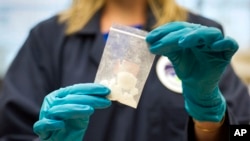In mid-March, representatives of the international community met in Vienna, Austria to discuss how to stem the flood of illicit synthetic opioids that is reaching into every corner of the world.
“The types of synthetic drug affecting your nations may vary. In some, it may be methamphetamines or ketamine; in others, tramadol, Captagon, fentanyl. The scale of the problem may be different,” said Secretary of State Antony Blinken. “But in every region, use, dependence, overdose deaths by synthetic drugs are rising rapidly.”
“For every nation, that has to start at home, including in the United States. Over the past three years, we’ve invested an unprecedented $169 billion to combat harmful drugs,” he said. “This reflects the fundamental fact that untreated substance use, and rising trafficking are two sides of the same coin.”
“The more that we can help people break the cycle of use and dependence, the smaller the illicit market for drugs. The more we can reduce the illicit supply of harmful drugs, the fewer people will be exposed to them,” said Secretary Blinken. “But while our efforts to address the synthetic drug crisis start at home, they can’t end at home. This is, simply put, a problem that no one country can solve alone.”
“The criminal groups that produce these drugs are agile. When one country cracks down on the production of a synthetic drug or the chemical precursors that go into making them, criminals quickly find another place to produce them,” he said. “And they’re always looking for new markets and new users to boost their profits.”
“So, if we want to successfully protect people in all of our countries, we simply can’t go it alone,” said Secretary Blinken. He then suggested four ways the global community can fight back:
“First, we can accelerate efforts to regulate the precursor chemicals that are used to illicitly make synthetic drugs. … Second, we can redouble our efforts to reduce overdose deaths. … Third, we can deepen collaboration with key actors outside of government, because just as no one country can solve this alone, governments alone can’t solve the problem.”
Finally, Secretary Blinken invited his international colleagues to “join the now 151 countries and 14 international organizations in the Global Coalition to Address Synthetic Drug Threats.”
“For the health, security, and prosperity of people in your countries, I hope that you’ll join us and that we can continue, and indeed deepen, our work together.”














